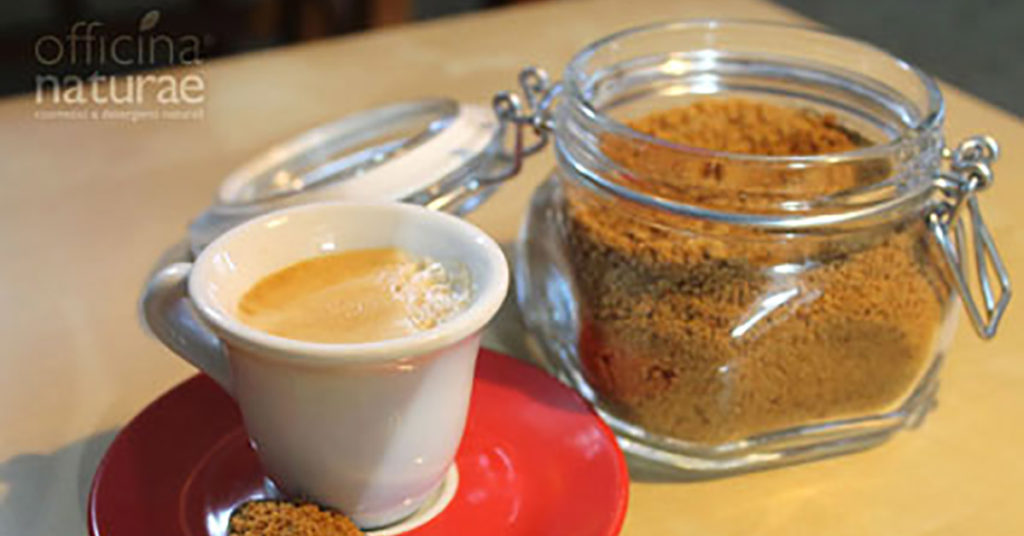What’s the connection between a good cup of coffee sweetened with brown sugar and a bottle of detergent from Officina Naturae?
It may seem strange but there is a very thin thread between these two seemingly unrelated things: it is precisely the cane sugar, now increasingly preferred to white sugar.
Bioplastic from sugar cane processing
Cane sugar is obtained by grinding Saccharum officinarum, more commonly called “sugar cane“.
From this grinding is obtained a very concentrated syrup which is then distilled and sent to crystallization.
The process also produces a good percentage of “ethanol“, mainly used as biofuel.
Not everyone knows, however, that the ethanol thus produced – or rather, bioethanol – can be used for the synthesis of bioplastics, in particular low or high density polyethylene.
The “green polyethylene” thus obtained, guarantees the same performance as the common polyethylene, obtained from petroleum.
The corageous choice by Officina Naturae, since 2014
In line with our research and our continuous investments for increasing environmental sustainability, we made a choice. Since September 2014, we courageously and anticipating a real trend in the field of packaging in the sector, have chosen to renew much of the packaging of the detergent lines, using this new raw material, green polyethylene from sugar cane, grown responsibly in Brazil.
What are the environmental benefits of bioplastics?
- The cultivation of sugar cane requires special climatic conditions specific to tropical areas. Brazil is currently the largest producer of it. Here the land cultivated with sugar cane, which is the source of our bioplastic, occupies 2.4% of the arable area. We would like to emphasize that it has no expansion in the protected areas of the Amazon rainforest. In fact, crops occupy suitable areas for mechanical cultivation, abandoned and degraded pastures and areas with low exploitation of water resources. In addition, particular attention shall be paid to respect for food production areas.
- Our bioplastic is certified Vinçotte (Belgian certification) for its content obtained entirely from renewable resources. It also boasts a significant reduction in CO2 emissions throughout the entire life cycle of the product, compared to the production of the same plastic (HDPE) from fossil resources, thereby reducing the potential for global warming, avoiding the thinnig of the ozone layer and acid rain.
- In addition, the processing of cane sugar results in bagasse, a by-product used as fuel for electricity generation. This energy supplies the same production systems but also the entire Brazilian electricity grid for 4.6% of the rest of the energy sources. Other organic processing residues are intended for the fertilisation of degraded soils which become available for cultivation again, without the use of chemical fertilizers. The low emissions of the entire production cycle compensate, thus, the great part of the environmental impact due the export of bioplastics.
Where us sugar cane bioplastic recycled?
And the disposal of this material? The “green polyethylene” is 100% recyclable in the recycling of common plastic, at the end of a virtuous life cycle. Our 1 liter bottles and 4 liter cans of laundry and home detergents of Officina Naturae and Solara lines, for years now, are in bioplastic. Also, the ecodesign contributes to significantly reduce the environmental footprint. A choice free from the consumption of fossil resources for you and for us. Certainly it is not a goal but only a stage in constant research towards increasingly sustainable packaging.






































